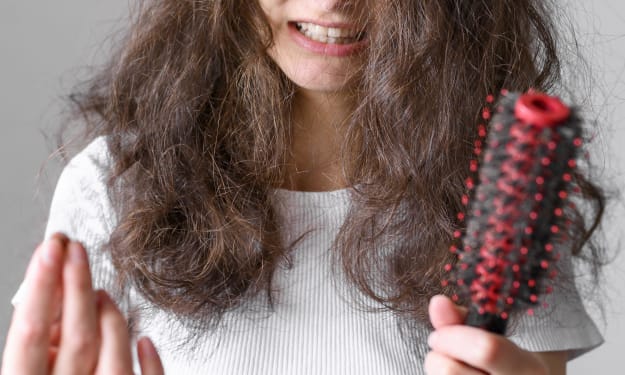Effective Nail Fungus Treatment Explained
The Ultimate Nail Care Routine Guide

### Outline
1. **Introduction**
2. **Understanding Nail Fungus**
- Definition and Types
- Causes of Nail Fungus
3. **Symptoms of Nail Fungus**
- Early Signs
- Advanced Symptoms
4. **Risk Factors**
- Who is Most Susceptible?
- Environmental Factors
5. **Diagnosis**
- Medical Examination
- Laboratory Tests
6. **Preventative Measures**
- Personal Hygiene
- Environmental Precautions
7. **Over-the-Counter Treatments**
- Topical Antifungals
- Oral Medications
8. **Prescription Treatments**
- Prescription Topicals
- Systemic Antifungals
9. **Natural Remedies**
- Tea Tree Oil
- Vinegar Soaks
10. **Home Care Strategies**
- Proper Nail Trimming
- Footwear Choices
11. **When to See a Doctor**
- Persistent Symptoms
- Severe Infections
12. **Treatment for Severe Cases**
- Surgical Options
- Laser Therapy
13. **Myths and Misconceptions**
- Common Myths
- Truths About Treatment
14. **Lifestyle Changes for Prevention**
- Diet and Nutrition
- Regular Exercise
15. **Conclusion**
- Summary of Key Points
- Encouragement to Seek Treatment
#### Introduction
Nail fungus, scientifically known as onychomycosis, is a prevalent condition that affects millions of individuals globally. It’s characterized by discolored, thickened, and brittle nails, often causing discomfort and embarrassment. Understanding the nuances of nail fungus and the most effective treatments can significantly improve one’s quality of life.
#### Understanding Nail Fungus
##### Definition and Types
Nail fungus is a fungal infection that occurs in the toenails or fingernails. There are several types, including distal subungual onychomycosis, white superficial onychomycosis, and candida onychomycosis. Each type presents unique challenges and requires specific approaches for treatment.
##### Causes of Nail Fungus
The primary cause of nail fungus is the overgrowth of fungi in, under, or on the nail. Fungi thrive in warm, moist environments, making feet particularly susceptible. Public places like swimming pools, gyms, and showers are common breeding grounds for these infections.
#### Symptoms of Nail Fungus
##### Early Signs
Early signs of nail fungus include a white or yellow spot under the tip of the nail. As the infection progresses, the nail may become discolored, thickened, and start to crumble at the edges.

##### Advanced Symptoms
In advanced stages, nails may detach from the nail bed, emit a foul odor, and cause pain. These symptoms can severely impact daily activities and self-esteem.
#### Risk Factors
##### Who is Most Susceptible?
Individuals with diabetes, circulatory issues, or a weakened immune system are more prone to nail fungus. Age is another factor, with older adults being at higher risk due to reduced blood circulation and thicker nails.
##### Environmental Factors
Exposure to humid environments and poor ventilation in footwear can increase the risk of developing nail fungus. Frequent use of communal showers and pools also contributes to the likelihood of infection.
#### Diagnosis
##### Medical Examination
Diagnosis typically involves a thorough medical examination. A healthcare provider will inspect the nails and possibly collect samples for laboratory analysis to confirm the presence of fungi.

##### Laboratory Tests
Laboratory tests, such as a KOH test or fungal culture, help determine the specific type of fungus, guiding the most effective treatment plan.
#### Preventative Measures
##### Personal Hygiene
Maintaining excellent personal hygiene is crucial in preventing nail fungus. Regular washing and drying of feet, along with proper nail trimming, can minimize the risk.
##### Environmental Precautions
Avoiding walking barefoot in public places, using antifungal sprays, and choosing breathable footwear are essential steps in prevention.
#### Over-the-Counter Treatments
##### Topical Antifungals
Topical antifungals, available as creams, gels, and lacquers, can be effective for mild infections. Common ingredients include clotrimazole and terbinafine.
##### Oral Medications
For more severe cases, over-the-counter oral medications may be recommended. These require a longer treatment period and consistent use to be effective.
#### Prescription Treatments
##### Prescription Topicals
Prescription-strength topical treatments are more potent and often used when over-the-counter options fail. They may include ciclopirox or efinaconazole.

##### Systemic Antifungals
Systemic antifungals, such as itraconazole and fluconazole, are oral medications that treat fungal infections from within. They are usually prescribed for more stubborn or widespread infections.
#### Natural Remedies
##### Tea Tree Oil
Tea tree oil is renowned for its antifungal properties. Applying it directly to the affected nails can help alleviate symptoms and promote healing.
##### Vinegar Soaks
Soaking the feet in a mixture of vinegar and water can create an inhospitable environment for fungi, aiding in the treatment process.
#### Home Care Strategies
##### Proper Nail Trimming
Keeping nails short and trimming them regularly helps prevent the spread of infection. It’s essential to use sanitized tools and cut straight across to avoid ingrown nails.
##### Footwear Choices
Wearing breathable shoes and moisture-wicking socks can reduce the risk of fungal growth. Alternating shoes and allowing them to air out between uses is also beneficial.
#### When to See a Doctor
##### Persistent Symptoms
If symptoms persist despite home treatments, it’s crucial to consult a healthcare professional. Persistent infections may require more intensive treatment.
##### Severe Infections
Severe infections, characterized by significant pain, nail detachment, or extensive discoloration, necessitate medical intervention to prevent further complications.

#### Treatment for Severe Cases
##### Surgical Options
In extreme cases, surgical removal of the nail may be necessary. This allows for direct treatment of the nail bed and reduces the fungal load.
##### Laser Therapy
Laser therapy is a newer treatment option that uses focused light to eradicate the fungus. It’s a promising alternative for patients unresponsive to traditional treatments.
#### Myths and Misconceptions
##### Common Myths
There are numerous myths about nail fungus, such as it being purely a cosmetic issue. In reality, untreated nail fungus can lead to severe complications.
##### Truths About Treatment
Effective treatment requires patience and consistency. Fungal infections can be stubborn, and it’s vital to adhere to prescribed treatments for optimal results.
#### Lifestyle Changes for Prevention
##### Diet and Nutrition
A balanced diet rich in vitamins and minerals supports overall health and immune function, which can help in preventing fungal infections.
##### Regular Exercise
Regular exercise promotes good circulation, essential for maintaining healthy nails and reducing the risk of fungal infections.
#### Conclusion
##### Summary of Key Points
Nail fungus is a common but manageable condition with the right treatment approach. Understanding the causes, symptoms, and available treatments is key to effective management.
##### Encouragement to Seek Treatment
If you suspect you have nail fungus, don’t hesitate to seek treatment. Early intervention can prevent complications and restore nail health, improving overall well-being.
Disclaimer
This article is for informational purposes only and does not constitute medical advice. Always consult a healthcare professional for diagnosis and treatment of nail fungus or any other medical condition. The effectiveness of treatments can vary; individual results may differ.
About the Creator
Enjoyed the story? Support the Creator.
Subscribe for free to receive all their stories in your feed. You could also pledge your support or give them a one-off tip, letting them know you appreciate their work.





Comments
There are no comments for this story
Be the first to respond and start the conversation.